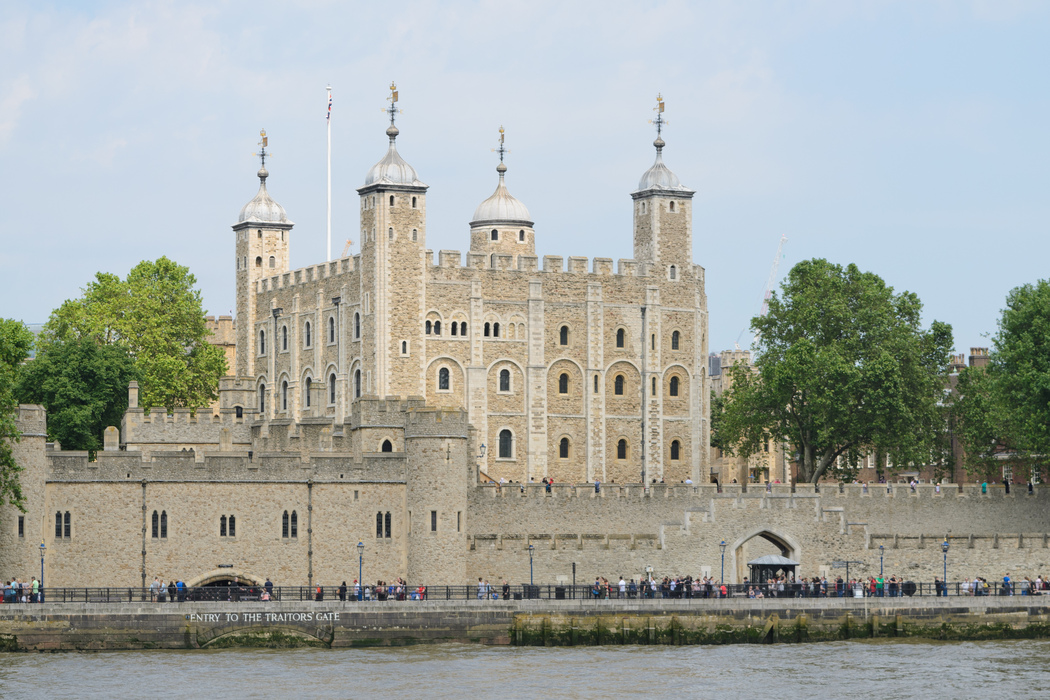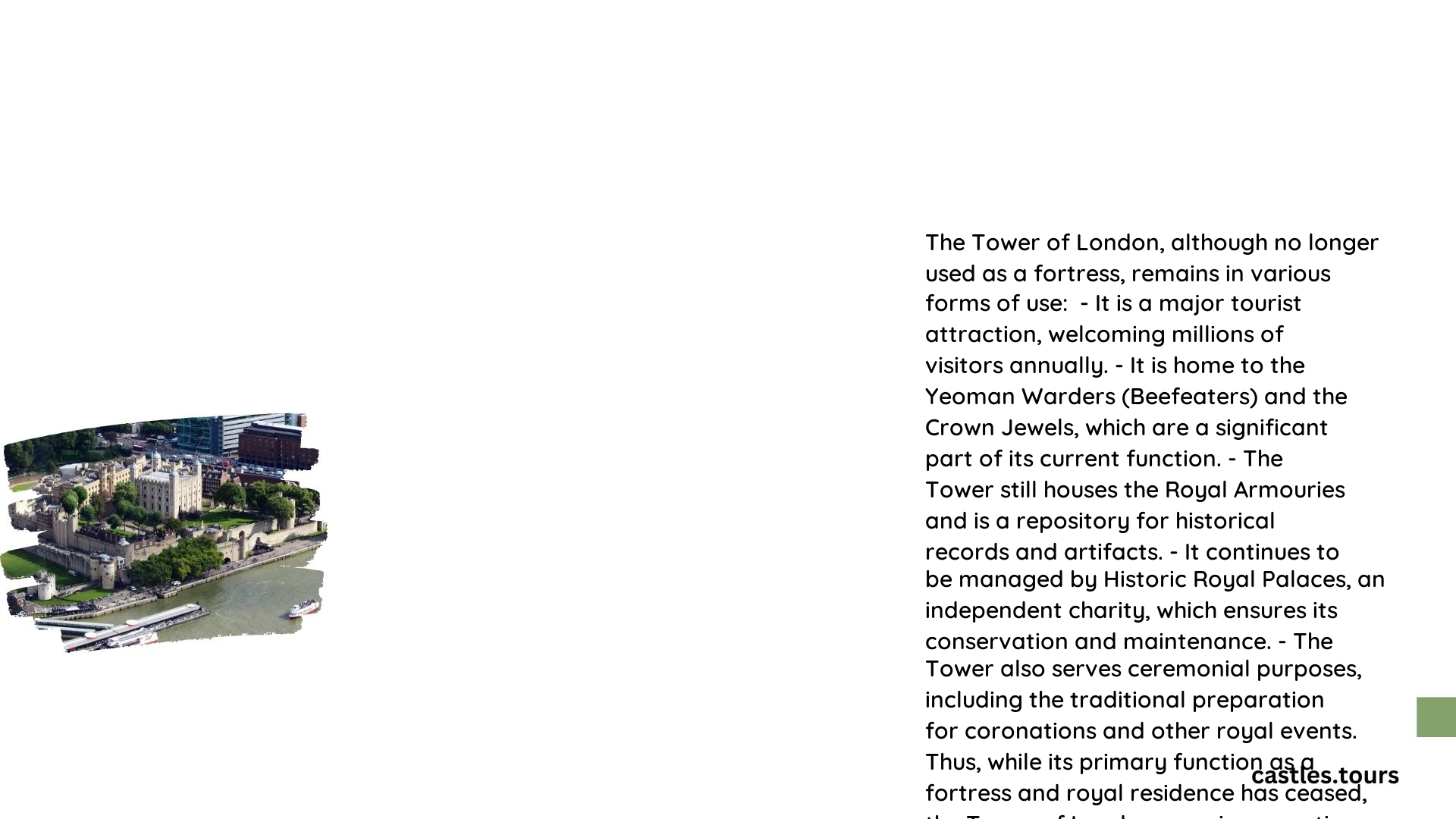The Tower of London, a historic fortress with a rich past, is no longer used as a royal residence or prison. However, it remains an active site serving multiple purposes. Today, the Tower functions primarily as a world-renowned tourist attraction, museum, and home to the Crown Jewels. It also maintains its ceremonial role and continues to house the Yeoman Warders and ravens, preserving centuries-old traditions.
What Are the Current Functions of the Tower of London?

The Tower of London serves several important functions in modern times:
- Tourist Attraction
- Museum Complex
- Home of the Crown Jewels
- Ceremonial Site
- Residence for Yeoman Warders
- Conservation of Historical Architecture
How Many Visitors Does the Tower of London Receive?
The Tower of London is one of the UK’s most popular tourist destinations, welcoming millions of visitors each year:
- Annual visitors: 2-3 million
- Peak season: Summer months (June-August)
- Busiest days: Weekends and public holidays
What Can Tourists Experience at the Tower?
Visitors to the Tower of London can enjoy a wide range of experiences:
- Crown Jewels Exhibition
- White Tower Tour
- Yeoman Warder Guided Tours
- Medieval Palace
- Prisoners Exhibition
- Royal Armouries Collection
- Tower Green and Scaffold Site
- Ravens’ Enclosure
How Does the Tower Preserve Its Historical Significance?

The Tower of London maintains its historical importance through several means:
- UNESCO World Heritage Site Status
- Ongoing Conservation Efforts
- Educational Programs
- Historical Reenactments
- Preservation of Traditions (e.g., Ceremony of the Keys)
What Role Do the Yeoman Warders Play?
Yeoman Warders, also known as Beefeaters, continue to play a crucial role at the Tower:
- Conduct guided tours for visitors
- Participate in ceremonial duties
- Reside within the Tower grounds
- Maintain centuries-old traditions
- Care for the Tower’s ravens
How Are the Crown Jewels Protected at the Tower?
The Tower of London remains the secure home of the Crown Jewels:
- 24/7 armed guard protection
- State-of-the-art security systems
- Bulletproof glass display cases
- Restricted access areas
- Regular security audits and updates
What Modern Amenities Are Available for Visitors?
The Tower has been adapted to accommodate modern visitors:
| Amenity | Description |
|---|---|
| Visitor Center | Information, ticket sales, and orientation |
| Gift Shops | Souvenirs and historical replicas |
| Cafes and Restaurants | On-site dining options |
| Accessibility Features | Ramps, elevators, and audio guides |
| Digital Guides | Smartphone apps and interactive displays |
How Does the Tower Contribute to Historical Research?
The Tower of London continues to be a valuable resource for historians:
- Archives and Records: Houses historical documents
- Archaeological Excavations: Ongoing research within the grounds
- Conservation Workshops: Study and preservation of artifacts
- Academic Partnerships: Collaborations with universities
- Publication of Findings: Regular release of historical research
What Special Events Are Held at the Tower?
The Tower hosts various events throughout the year:
- Royal Gun Salutes
- Ceremony of the Keys (nightly)
- Yeoman Warder Tours
- Reenactments of Historical Events
- Temporary Exhibitions
- Educational Workshops for Schools
How Does the Tower Adapt to Modern Challenges?
The Tower of London faces and addresses several modern challenges:
- Balancing Tourism and Conservation
- Implementing Sustainable Practices
- Enhancing Digital Engagement
- Ensuring Security in the 21st Century
- Addressing Accessibility Concerns
What Future Plans Exist for the Tower?
Historic Royal Palaces, the charity managing the Tower, has outlined future plans:
- Continued Conservation Efforts
- Enhanced Visitor Experiences through Technology
- Expanded Educational Programs
- Increased Sustainability Measures
- Further Archaeological Investigations
In conclusion, while the Tower of London no longer serves its original purpose as a fortress or prison, it remains a vital and active site. Its current use as a world-class tourist attraction, museum, and guardian of royal treasures ensures its continued significance in the 21st century. The Tower successfully balances its rich history with modern functions, preserving traditions while adapting to contemporary needs and challenges.
References:
– https://whc.unesco.org/en/list/488/
– https://en.wikipedia.org/wiki/Tower_of_london
– https://www.britannica.com/topic/Tower-of-London
